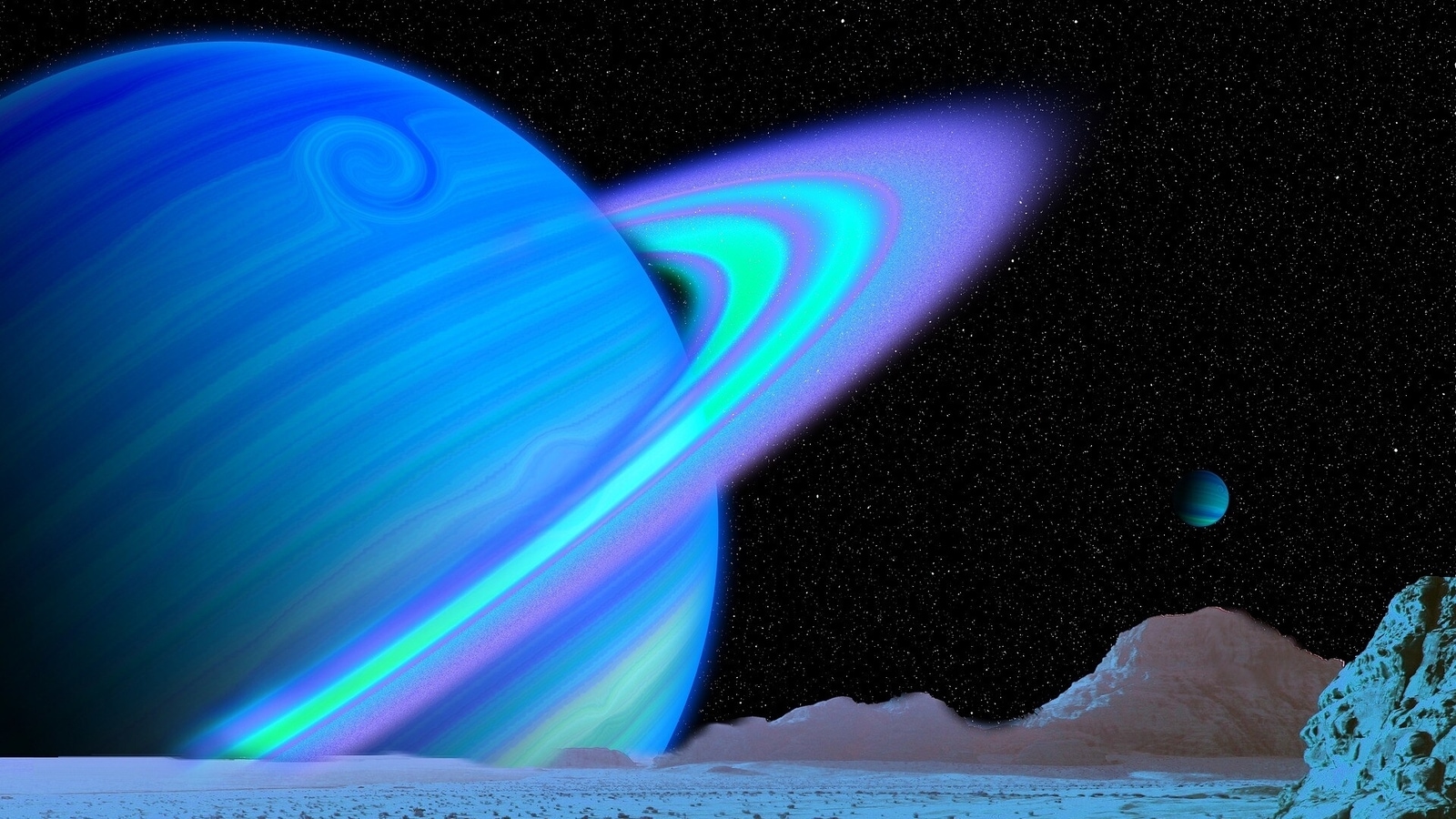Breakthrough! In a first, infrared auroras on Uranus confirmed
Scientists have made a groundbreaking discovery, confirming the existence of infrared auroras on Uranus, shedding light on the planet's mysterious heat.

In a remarkable breakthrough, scientists have, after nearly two decades of research, confirmed the presence of stunning infrared auroras gracing the northern regions of Uranus. This revelation not only enhances our comprehension of Uranian auroras but also offers a glimmer of insight into why this distant gas giant boasts an unexpectedly high temperature.
Uranus, like its planetary siblings, is significantly hotter than theoretical models predict, especially when considering its vast distance from the Sun. Astrophysicist Emma Thomas from the University of Leicester in the UK posits that the energetic auroras on Uranus might be the key to this mystery, as they generate and channel heat from the auroras toward the magnetic equator, Sciencealert reported.
We are now on WhatsApp. Click to join.
Astronomical Spectacles Beyond Earth
Auroras materialise when energetic particles are accelerated along magnetic field lines towards a planet, interacting with the particles in its atmosphere. This interaction induces ionisation, resulting in a luminous display. As such, these celestial light shows are not exclusive to Earth.
For instance, Jupiter and Mars boast powerful ultraviolet auroras, while Venus's are reminiscent of Earth's green shimmer. As for Mercury, lacking a proper atmosphere, its auroras take the form of X-ray fluorescence emanating from surface minerals.
The Quest for Elusive Infrared Auroras
In the case of Uranus, ultraviolet auroras have been known since 1986, and there may even be an X-ray component. The quest to uncover infrared auroras, akin to those observed on Jupiter and Saturn, has been ongoing since 1992, but it remained elusive.
Despite limited Uranus probes, Emma Thomas and her team suspected the existence of infrared auroral emissions, possibly hidden in the data. Their breakthrough moment came in 2006 at the Keck Observatory when they closely examined 224 images, searching for a specific ionised particle, H3+, whose glow intensity corresponds to temperature.
Their analysis revealed an increase in H3+ density without a concurrent temperature change, indicative of heightened upper atmosphere ionisation consistent with an infrared aurora. Thus, this milestone signifies the detection of infrared auroras in Uranus's atmosphere.
As auroras are intricately linked to both the atmosphere and magnetic field of Uranus, this discovery not only unravels some of the planet's mysteries, such as its eccentrically tipped and asymmetrical magnetic field but also advances our ability to study exoplanets with Neptune- and Uranus-like attributes.
In the words of Emma Thomas, "Our findings will expand our knowledge of ice giant auroras and strengthen our understanding of planetary magnetic fields within our Solar System, on exoplanets, and even on our own planet."
Catch all the Latest Tech News, Mobile News, Laptop News, Gaming news, Wearables News , How To News, also keep up with us on Whatsapp channel,Twitter, Facebook, Google News, and Instagram. For our latest videos, subscribe to our YouTube channel.































